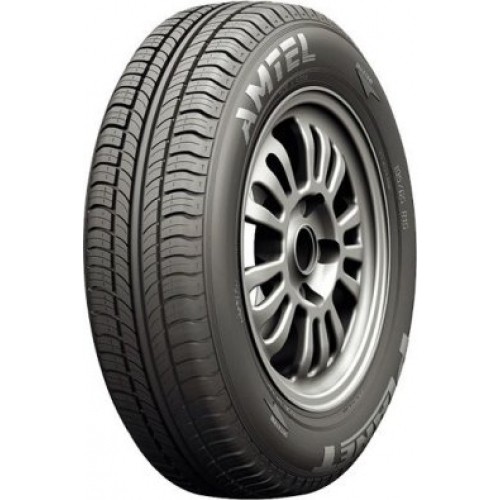Racing through Russian highways or navigating busy city streets, drivers constantly seek reliable rubber companions for their vehicles. The Amtel Planet NV emerged from Russia’s tire manufacturing scene, promising an economical solution for compact car owners. While budget-friendly options often spark interest, they sometimes reveal surprising truths about the delicate balance between cost and performance.
The automotive world rarely forgives mediocrity, especially when it comes to the four crucial contact points between your car and the road. The Planet NV’s story serves as a compelling case study of how ambitious goals and practical realities don’t always align in the budget tire segment.
Design Philosophy: Between Innovation and Compromise
The Planet NV’s symmetrical directional tread pattern follows traditional design principles, featuring four longitudinal ribs and shoulder zones. Each element serves a specific purpose – the rigid central section promotes straight-line stability, while arrow-shaped blocks maximize dry road grip. This straightforward approach demonstrates Amtel’s attempt to achieve reliable performance without excessive complexity.
The tire’s central water channel, flanked by two additional grooves, showcases an elementary yet purposeful drainage system. Engineers positioned wider channels in the center, theoretically enhancing hydroplaning resistance.
“Initially, I was drawn to these tires because of their aggressive tread pattern and attractive price point. However, real-world performance proved more complex than appearances suggested.” – Mark S., automotive enthusiast
The shoulder zones incorporate lateral drainage channels, designed to evacuate water during cornering. While this setup appears promising on paper, practical experience reveals limitations in wet conditions.
Real-World Performance: Expectations vs. Reality
Track testing and daily driving expose the true character of any tire. The Planet NV exhibits notable durability, with users reporting minimal wear even after multiple seasons. This longevity, however, comes at a cost that becomes apparent in various driving scenarios.
Here’s what drivers typically experience with these tires:
- high-speed instability above 70 mph causes noticeable vibrations;
- excessive road noise rivals winter tires in volume;
- compromised wet traction despite drainage features;
- challenging wheel balancing requirements;
- remarkable tread wear resistance.
This combination of characteristics paints a picture of a tire that prioritized manufacturing efficiency over refined performance attributes.
The Value Proposition Dilemma
The Planet NV positions itself in the budget segment, targeting cost-conscious consumers. While the initial purchase price attracts attention, experienced drivers often question the long-term value proposition.
“These tires lasted incredibly long, outliving their welcome. The durability would be impressive if not for the constant reminder of their performance limitations.” – David K., daily commuter
The extended lifespan, typically reaching 30-40% wear after two seasons, represents a double-edged sword. Drivers face a choice between enduring suboptimal performance for an extended period or replacing serviceable but unsatisfactory tires.
Technical Implementation and Market Impact
The tire’s construction reveals Amtel’s approach to cost-effective manufacturing. The compound choice and tread design prioritize durability over comfort and performance. While this strategy might appeal to certain market segments, it raises questions about the minimum acceptable performance standards in modern tire manufacturing.
Consider these technical aspects that influence daily driving:
- rigid compound composition affecting ride comfort;
- simplified tread pattern limiting water displacement;
- basic carcass construction impacting high-speed stability;
- minimal noise reduction features.
These characteristics reflect fundamental engineering decisions that shaped the tire’s market position and user experience.
Beyond the Specifications: Real-World Implications
The Planet NV’s journey through the market illuminates broader issues in budget tire development. While achieving remarkable longevity, the compromises in comfort and performance highlight the challenges manufacturers face in the economy segment.
This analysis isn’t just about one tire’s shortcomings – it’s a reflection on the complex balance between affordability and essential performance characteristics that every driver deserves, regardless of their budget.
Pros and Cons
| Advantages | Disadvantages |
|---|---|
| Exceptional tread life with 30-40% wear after two seasons | Severe vibration issues at speeds above 70 mph |
| Very competitive initial purchase price | Poor wet traction despite drainage design |
| Reliable performance in basic city driving conditions | Excessive road noise comparable to winter tires |
| Durable construction resisting physical damage | Difficult to achieve proper wheel balance |
| Predictable handling in dry conditions at moderate speeds | Harsh ride quality due to rigid compound |
The Amtel Planet NV represents a stark reminder that while budget tires can offer certain advantages, fundamental performance characteristics shouldn’t be compromised. Despite impressive durability, the significant comfort and safety limitations make these tires a challenging recommendation for modern drivers who expect a balanced performance package.

